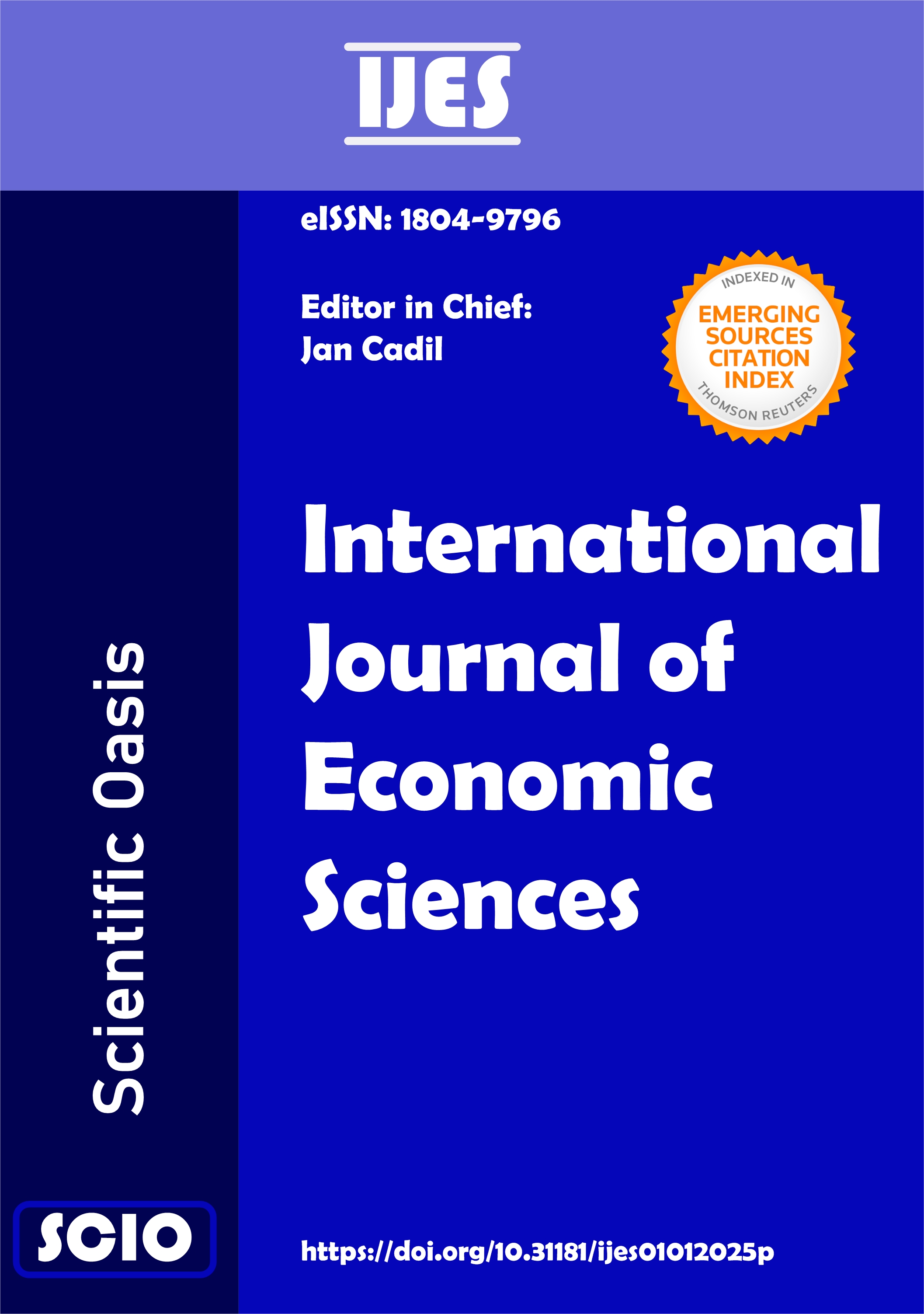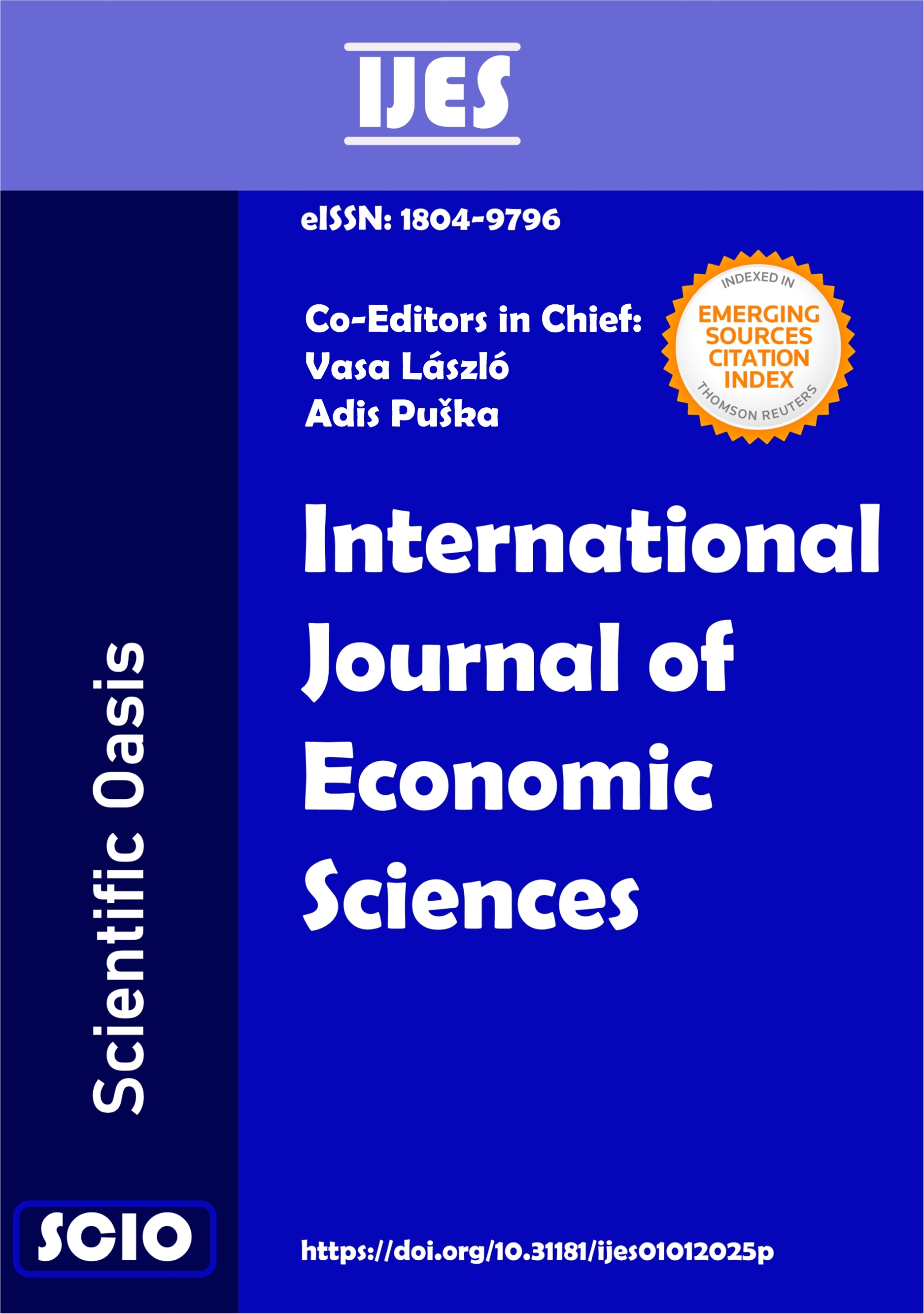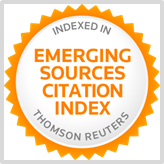Social Media Opinion Leaders’ Self-Presentation and Youth Tourism Impulse Buying: A Mediated SOR Analysis
DOI:
https://doi.org/10.31181/ijes1412025179Keywords:
Social Media Opinion Leaders , Impulsive Buying Tendency of Tourism, Online Self-presentation, Perceived Value, Flow Experience, SOR ModelAbstract
This study pioneers the application of impression management theory to tourism impulse buying, identifying four novel self-presentation attributes. Data were collected from an online and an offline survey of 345 Chinese university students. Using SPSS22.0 and AMOS21.0 statistical software, this paper analyses the pre-survey and formal survey data through descriptive statistics, reliability and validity tests, correlation analysis and structural equation model testing, and the calculation results verify the validity of the research hypotheses and models proposed in this paper. The results reveal that the four self-presentation attributes, professionalism, interactivity, homophily, and entertainment, positively influence young people’s impulsive buying tendency. Among them, the influence of professionalism exceeds the other three attributes, and its impact on perceived value exceeds the impact on flow experience. Interactivity had a greater impact on the flow experience, outpacing the other three attributes. Homogeneity had a slightly stronger effect on perceived value than on flow experience. Entertainment has more of an impact on perceived value than the other three attributes. Moreover, flow experience and perceived value significantly affect impulsive buying and mediate these relationships. Also, perceived value has a greater impact on impulse buying than flow experience. These findings clarify the psychological mechanisms and pathways underpinning young people’s impulsive buying tendency, emphasizing their impulsive, highly visual, and immediate nature, as well as their dependence on digital technology. The study also offers strategies to guide young consumers toward more rational purchase decisions.
Downloads
References
Cobb, C. J., & Hoyer, W. D. (1986). Planned versus impulse purchase behavior. Journal of Retailing, 62(4), 384–409.
Bellenger, D. N., Robertson, D. H., & Hirschman, E. C. (1978). Impulse buying varies by product. Journal of Advertising Research, 18(6), 15–18. https://doi.org/10.1016/S0022-4359(99)80092-X DOI: https://doi.org/10.1080/00218499.1978.12519001
Rook, D. W. (1987). The buying impulse. Journal of Consumer Research, 14(2), 189–199. https://doi.org/10.1086/209105 DOI: https://doi.org/10.1086/209105
Beatty, S. E., & Ferrell, M. E. (1998). Impulse buying: Modeling its precursors. Journal of Retailing, 74(2), 169–191.
https://doi.org/10.1016/S0022-4359(99)80092-X DOI: https://doi.org/10.1016/S0022-4359(99)80092-X
Chan, T. K. H., Cheung, C. M. K., & Lee, Z. W. Y. (2017). The state of online impulse-buying research: A literature analysis. Information & Management, 54(2), 204–217. https://doi.org/10.1016/j.im.2016.06.001 DOI: https://doi.org/10.1016/j.im.2016.06.001
Nyrhinen, J., Sirola, A., Koskelainen, T., Munnukka, J., & Wilska, T. A. (2024). Online antecedents for young consumers’ impulse buying behavior. Computers in Human Behavior, 153, 108129. https://doi.org/10.1016/j.chb.2023.108129 DOI: https://doi.org/10.1016/j.chb.2023.108129
Howe, N., & Strauss, W. (2000). Millennials rising: The next great generation. Vintage Books.
Caber, M., Albayrak, T., & Crawford, D. (2020). Perceived value and its impact on travel outcomes in youth tourism. Journal of Outdoor Recreation and Tourism, 31, 100327. https://doi.org/10.1016/j.jort.2020.100327 DOI: https://doi.org/10.1016/j.jort.2020.100327
Meng, B., Ryu, H. B., Chua, B. L., & Han, H. (2020). Predictors of intention for continuing volunteer tourism activities among young tourists. Asia Pacific Journal of Tourism Research, 25(3), 261–273. https://doi.org/10.1080/10941665.2019.1692046 DOI: https://doi.org/10.1080/10941665.2019.1692046
Xu, J. B., & Tavitiyaman, P. (2018). How young tourists are motivated: The role of destination personality. Tourism Analysis, 23(1), 165–170. https://doi.org/10.3727/108354217X15143857878723 DOI: https://doi.org/10.3727/108354217X15143857878723
Amos, C., Holmes, G. R., & Keneson, W. C. (2014). A meta-analysis of consumer impulse buying. Journal of Retailing and Consumer Services, 21, 86–97. https://doi.org/10.1016/j.jretconser.2013.11.004 DOI: https://doi.org/10.1016/j.jretconser.2013.11.004
Sofi, S. A., & Nika, F. A. (2017). Role of intrinsic factors in impulsive buying decision: An empirical study of young consumers. Arab Economic and Business Journal, 12(1), 29–43. https://doi.org/10.1016/j.aebj.2016.12.002 DOI: https://doi.org/10.1016/j.aebj.2016.12.002
Liu, P., He, J. L., & Li, A. M. (2019). Upward social comparison on social network sites and impulse buying: A moderated mediation model of negative affect and rumination. Computers in Human Behavior, 96, 133–140. https://doi.org/10.1016/j.chb.2019.02.003 DOI: https://doi.org/10.1016/j.chb.2019.02.003
Park, E. J., Kim, E. Y., Funches, V. M., & Foxx, W. (2012). Apparel product attributes, web browsing, and e-impulse buying on shopping websites. Journal of Business Research, 65(11), 1583–1589. https://doi.org/10.1016/j.jbusres.2011.02.043 DOI: https://doi.org/10.1016/j.jbusres.2011.02.043
Phan, D. H., Nguyen, Q. D., & Phuc, V. K. N. (2024). Dataset on Vietnamese students’ impulse buying behavior on TikTok shop. Data in Brief, 57, 111047. https://doi.org/10.1016/j.dib.2024.111047 DOI: https://doi.org/10.1016/j.dib.2024.111047
Ahn, J., Lee, S. L., & Kwon, J. (2020). Impulsive buying in hospitality and tourism journals. Annals of Tourism Research, 82, 102764. https://doi.org/10.1016/j.annals.2019.102764 DOI: https://doi.org/10.1016/j.annals.2019.102764
Laesser, C., & Dolnicar, S. (2012). Impulse purchasing in tourism – Learnings from a study in a matured market. Anatolia, 23(2), 268–286. https://doi.org/10.1080/13032917.2012.688409 DOI: https://doi.org/10.1080/13032917.2012.688409
Zafar, A. U., Qiu, J. G., Li, Y., Wang, J. G., & Shahzad, M. (2021). The impact of social media celebrities' posts and contextual interactions on impulse buying in social commerce. Computers in Human Behavior, 115, 106178.
https://doi.org/10.1016/j.chb.2019.106178 DOI: https://doi.org/10.1016/j.chb.2019.106178
Stern, H. (1962). The significance of impulse buying today. Journal of Marketing, 26(2), 59–62. https://doi.org/10.1177/002224296202600212 DOI: https://doi.org/10.1177/002224296202600212
Clover, V. T. (1950). Relative importance of impulse-buying in retail stores. Journal of Marketing, 15, 66–70. https://doi.org/10.1177/00222429500150011 DOI: https://doi.org/10.1177/002224295001500110
Puri, R. (1996). Measuring and modifying consumer impulsiveness: A cost-benefit accessibility framework. Journal of Consumer Psychology, 5(2), 87–113. https://doi.org/10.1207/s15327663jcp0502_01 DOI: https://doi.org/10.1207/s15327663jcp0502_01
Kacen, J. J., Hess, J. D., & Chiang, W. Y. K. (2013). Bricks or clicks? Consumer attitudes toward traditional stores and online stores. Global Economics and Management Review, 18(1), 12–21. https://doi.org/10.1016/S2340-1540(13)70003-3 DOI: https://doi.org/10.1016/S2340-1540(13)70003-3
Taute, H., & McQuitty, S. (2004). Feeling good! Going good! An exploratory look at the impulsive purchase of the social good. Journal of Marketing Theory and Practice, 12(2), 16–27.https://doi.org/10.1080/10696679.2004.11658516 DOI: https://doi.org/10.1080/10696679.2004.11658516
Hamza, E. A., & Elsantil, Y. (2024). Consumer impulsive buying: Causes, consequences, and control. In The Psychology and Neuroscience of Impulsivity (pp. 221–230). DOI: https://doi.org/10.1016/B978-0-443-13437-1.00010-0
Pradipto, Y. D., Winata, C., Murti, K., & Azizah, A. (2016). Think again before you buy: The relationship between self-regulation and impulsive buying behaviors among Jakarta young adults. Procedia - Social and Behavioral Sciences, 222, 177–185. https://doi.org/10.1016/j.sbspro.2016.05.209 DOI: https://doi.org/10.1016/j.sbspro.2016.05.209
Yao, Y. B., Jia, G. M., & Hou, Y. S. (2021). Impulsive travel intention induced by sharing conspicuous travel experience on social media: A moderated mediation analysis. Journal of Hospitality and Tourism Management, 49, 431–438. https://doi.org/10.1016/j.jhtm.2021.10.012 DOI: https://doi.org/10.1016/j.jhtm.2021.10.012
Li, C., Wang, Y., Lv, X., & Li, H. (2021). To buy or not to buy? The effect of time scarcity and travel experience on tourists' impulse buying. Annals of Tourism Research, 86, 103083. https://doi.org/10.1016/j.annals.2020.103083 DOI: https://doi.org/10.1016/j.annals.2020.103083
Casaló, L. V., Flavián, C., & Ibáñez-Sánchez, S. (2020). Influencers on Instagram: Antecedents and consequences of opinion leadership. Journal of Business Research, 117, 510–519. https://doi.org/10.1016/j.jbusres.2018.07.005 DOI: https://doi.org/10.1016/j.jbusres.2018.07.005
Chan, K. K., & Misra, S. (1990). Characteristics of the opinion leader: A new dimension. Journal of Advertising, 19(3), 53–60. https://doi.org/10.1080/00913367.1990.10673192 DOI: https://doi.org/10.1080/00913367.1990.10673192
Flodgren, G., Parmelli, E., Doumit, G., Gattellari, M., O’Brien, M. A., Grimshaw, J., & Eccles, M. P. (2011). Local opinion leaders: Effects on professional practice and health care outcomes. Cochrane Database of Systematic Reviews, 2011(8), CD000125. https://doi.org/10.1002/14651858.CD000125.pub4 DOI: https://doi.org/10.1002/14651858.CD000125.pub4
Van Eck, P. S., Jager, W., & Leeflang, P. S. H. (2011). Opinion leaders’ role in innovation diffusion: A simulation study. Journal of Product Innovation Management, 28, 187–203. https://doi.org/10.1111/j.1540-5885.2011.00791.x DOI: https://doi.org/10.1111/j.1540-5885.2011.00791.x
Chen, J., Kou, G., Wang, H. M., & Zhao, Y. Y. (2021). Influence identification of opinion leaders in social networks: An agent-based simulation on competing advertisements. Information Fusion, 76, 227–242.https://doi.org/10.1016/j.inffus.2021.06.004 DOI: https://doi.org/10.1016/j.inffus.2021.06.004
Dittmar, H., Long, K., & Bond, R. (2007). When a better self is only a button click away: Associations between materialistic values, emotional and identity-related buying motives, and compulsive buying tendency online. Journal of Social and Clinical Psychology, 26(3), 334–361. https://doi.org/10.1521/jscp.2007.26.3.334 DOI: https://doi.org/10.1521/jscp.2007.26.3.334
Leary, M. R., & Kowalski, R. M. (1990). Impression management: A literature review and two-component model. Psychological Bulletin, 107(1), 34–47. https://doi.org/10.1037/0033-2909.107.1.34 DOI: https://doi.org/10.1037//0033-2909.107.1.34
Tseëlon, E. (1992). Is the presented self-sincere? Goffman, impression management and the postmodern self. Theory, Culture & Society, 9(2), 115–128. https://doi.org/10.1177/0263276920090020 DOI: https://doi.org/10.1177/026327692009002006
Chen, W. T., & Hsieh, M. H. (2023). Environmental self-identity, self-efficacy, and the emergence of green opinion leaders: An exploratory study. Heliyon, 9, e17351. https://doi.org/10.1016/j.heliyon.2023.e17351 DOI: https://doi.org/10.1016/j.heliyon.2023.e17351
Kim, M. (2022). How can I be as attractive as a fitness YouTuber in the era of COVID-19? The impact of digital attributes on flow experience, satisfaction, and behavioral intention. Journal of Retailing and Consumer Services, 64, 102778. https://doi.org/10.1016/j.jretconser.2021.102778 DOI: https://doi.org/10.1016/j.jretconser.2021.102778
Nikolinakou, A., Phua, J., & Kwon, E. S. (2024). What drives addiction on social media sites? The relationships between psychological well-being states, social media addiction, brand addiction, and impulse buying on social media. Computers in Human Behavior, 153, 107129. https://doi.org/10.1016/j.chb.2023.108086 DOI: https://doi.org/10.1016/j.chb.2023.108086
Mehrabian, A., & Russell, J. A. (1974). An approach to environmental psychology. MIT Press.
Andonopoulos, V., Lee, J. I., & Mathies, C. (2023). Authentic isn’t always best: When inauthentic social media influencers induce positive consumer purchase intention through inspiration. Journal of Retailing and Consumer Services, 75, 103521. https://doi.org/10.1016/j.jretconser.2023.103521 DOI: https://doi.org/10.1016/j.jretconser.2023.103521
Yang, X., Mao, H., Jia, L., & Bublitz, M. G. (2019). A sweet romance: Divergent effects of romantic stimuli on the consumption of sweets. Journal of Consumer Research, 45(6), 1213–1229. https://doi.org/10.1093/jcr/ucy044 DOI: https://doi.org/10.1093/jcr/ucy044
Luo, X. Y., Wan, L. C., & Liu, X. S. (2023). Harnessing romance: The effect of exposure to romance-themed attractions on tourists’ impulsive buying. Tourism Management, 96, 104717. https://doi.org/10.1016/j.tourman.2022.104717 DOI: https://doi.org/10.1016/j.tourman.2022.104717
Kuppelwieser, V. G., Klaus, P., Manthiou, A., & Hollebeek, L. D. (2022). The role of customer experience in the perceived value–word-of-mouth relationship. Journal of Services Marketing, 36(3), 364–378. DOI: https://doi.org/10.1108/JSM-11-2020-0447
Hyun, H., Thavisay, T., & Lee, H. S. (2022). Enhancing the role of flow experience in social media usage and its impact on shopping. Journal of Retailing and Consumer Services, 65, 102492. https://doi.org/10.1016/j.jretconser.2021.102492 DOI: https://doi.org/10.1016/j.jretconser.2021.102492
Baber, R., & Baber, P. (2023). Influence of social media marketing efforts, e-reputation and destination image on intention to visit among tourists: Application of S-O-R model. Journal of Hospitality and Tourism Insights, 5, 2298–2316. https://doi.org/10.1108/JHTI-06-2022-0270 DOI: https://doi.org/10.1108/JHTI-06-2022-0270
Csikszentmihalyi, M. (1990). Literacy and intrinsic motivation. Daedalus, 119(1), 115–140.
Li, L., Kang, K., Zhao, A., & Feng, Y. (2023). The impact of social presence and facilitation factors on online consumers' impulse buying in live shopping—Celebrity endorsement as a moderating factor. Information Technology & People, 36(6), 2611–2631. https://doi.org/10.1108/ITP-03-2021-0203 DOI: https://doi.org/10.1108/ITP-03-2021-0203
Tajfel, H. (1974). Social identity and intergroup behaviour. Social Science Information, 13(2), 65–93.
https://doi.org/10.1177/053901847401300204 DOI: https://doi.org/10.1177/053901847401300204
Slovic, P. (1966). Cue-consistency and cue-utilization in judgment. The American Journal of Psychology, 79(3), 427–434. https://doi.org/10.2307/1420883 DOI: https://doi.org/10.2307/1420883
Hsieh, J. K. (2023). The impact of influencers' multi-SNS use on followers’ behavioral intentions: An integration of cue consistency theory and social identity theory. Journal of Retailing and Consumer Services, 74, 103397. https://doi.org/10.1016/j.jretconser.2023.103397 DOI: https://doi.org/10.1016/j.jretconser.2023.103397
Kang, M., Liang, T., Sun, B., & Mao, H. Y. (2023). Detection of opinion leaders: Static vs. dynamic evaluation in online learning communities. Heliyon, 9(4), e14844. https://doi.org/10.1016/j.heliyon.2023.e14844 DOI: https://doi.org/10.1016/j.heliyon.2023.e14844
Lu, H. H., Chen, C. F., & Tai, Y. W. (2024). Exploring the roles of vlogger characteristics and video attributes on followers’ value perceptions and behavioral intention. Journal of Retailing and Consumer Services, 77, 103686. https://doi.org/10.1016/j.jretconser.2023.103686 DOI: https://doi.org/10.1016/j.jretconser.2023.103686
Horton, D., & Wohl, R. R. (1956). Mass communication and para-social interaction: Observations on intimacy at a distance. Psychiatry, 19(3), 215–229. https://doi.org/10.1080/00332747.1956.11023049 DOI: https://doi.org/10.1080/00332747.1956.11023049
Xiong, Y., Cheng, Z. C., Liang, E. H., & Wu, Y. B. (2018). Accumulation mechanism of opinion leaders' social interaction ties in virtual communities: Empirical evidence from China. Computers in Human Behavior, 82, 81–93. https://doi.org/10.1016/j.chb.2018.01.005 DOI: https://doi.org/10.1016/j.chb.2018.01.005
Ladhari, R., Massa, E., & Skandrani, H. (2020). YouTube vloggers’ popularity and influence: The roles of homophily, emotional attachment, and expertise. Journal of Retailing and Consumer Services, 54, 102027. https://doi.org/10.1016/j.jretconser.2019.102027 DOI: https://doi.org/10.1016/j.jretconser.2019.102027
Bu, Y., Parkinson, J., & Thaichon, P. (2022). Influencer marketing: Homophily, customer value co-creation behaviour and purchase intention. Journal of Retailing and Consumer Services, 66, 102904.https://doi.org/10.1016/j.jretconser.2021.102904 DOI: https://doi.org/10.1016/j.jretconser.2021.102904
Ye, W. (2024). An empirical study on the relationship between rider recreational specialization, individual-environment fit, and heart flow experience. Heliyon, 10, e31781. https://doi.org/10.1016/j.heliyon.2024.e31781 DOI: https://doi.org/10.1016/j.heliyon.2024.e31781
Do, H. N., Shih, W. R., & Ha, Q. A. (2020). Effects of mobile augmented reality apps on impulse buying behavior: An investigation in the tourism field. Heliyon, 6, e04667. https://doi.org/10.1016/j.heliyon.2020.e04667 DOI: https://doi.org/10.1016/j.heliyon.2020.e04667
Adiningtyas, H., & Auliani, A. S. (2024). Customer perceived value: A study based on customer perception on social media. Procedia Computer Science, 234, 1451–1458. https://doi.org/10.1016/j.procs.2024.03.145 DOI: https://doi.org/10.1016/j.procs.2024.03.145
El-Adly, M. I. (2019). Modelling the relationship between hotel perceived value, customer satisfaction, and customer loyalty. Journal of Retailing and Consumer Services, 50, 322–332. https://doi.org/10.1016/j.jretconser.2018.07.007 DOI: https://doi.org/10.1016/j.jretconser.2018.07.007
Jones, M. A., Reynolds, K. E., & Arnold, M. J. (2006). Hedonic and utilitarian shopping value: Investigating differential effects on retail outcomes. Journal of Business Research, 59(9), 974–981.https://doi.org/10.1016/j.jbusres.2006.03.006 DOI: https://doi.org/10.1016/j.jbusres.2006.03.006
Stoel, L., Wickliffe, V., & Lee, K. H. (2004). Attribute beliefs and spending as antecedents to shopping value. Journal of Business Research, 57(10), 1067–1073. https://doi.org/10.1016/S0148-2963(03)00016-X DOI: https://doi.org/10.1016/S0148-2963(03)00016-X
Yang, F., Tang, J., Men, J. Q., & Zheng, X. B. (2021). Consumer perceived value and impulse buying behavior on mobile commerce: The moderating effect of social influence. Journal of Retailing and Consumer Services, 63, 102683. https://doi.org/10.1016/j.jretconser.2021.102683 DOI: https://doi.org/10.1016/j.jretconser.2021.102683
Alam, S. S., Masukujjaman, M., Makhbul, Z. K. M., Ali, M. H., Omar, N. A., & Siddik, A. B. (2023). Impulsive hotel consumption intention in live streaming e-commerce settings: Moderating role of impulsive consumption tendency using two-stage SEM. International Journal of Hospitality Management, 115, 103606. https://doi.org/10.1016/j.ijhm.2023.103606 DOI: https://doi.org/10.1016/j.ijhm.2023.103606
Cheng, Y., Cheah, J. H., & Liu, Y. (2022). To stream or not to stream? Exploring factors influencing impulsive consumption through gastronomy livestreaming. International Journal of Contemporary Hospitality Management, 34(9), 3394–3416. https://doi.org/10.1108/IJCHM-09-2021-1137 DOI: https://doi.org/10.1108/IJCHM-09-2021-1137
Csikszentmihalyi, M. (1990). Flow: The psychology of optimal experience. Harper & Row.
Bose, D. K. (2008). Review of flow: The psychology of optimal experience. Information Design Journal, 16(1), 75. https://doi.org/10.1075/idj.16.1.11bos DOI: https://doi.org/10.1075/idj.16.1.11bos
Zhang, J., Jiang, N., Turner, J. J., & Pahlevan-Sharif, S. (2022). The impact of scarcity on consumers' impulse buying based on the S-O-R theory. Frontiers in Psychology, 13, 792419. https://doi.org/10.3389/fpsyg.2022.792419 DOI: https://doi.org/10.3389/fpsyg.2022.792419
Chen, C. C., & Yao, J. Y. (2018). What drives impulse buying behaviors in a mobile auction? The perspective of the Stimulus-Organism-Response model. Telematics and Informatics, 35, 1249–1262. https://doi.org/10.1016/j.tele.2018.02.007 DOI: https://doi.org/10.1016/j.tele.2018.02.007
Netemeyer, R. G., & Bearden, W. O. (1992). A comparative analysis of two models of behavioral intention. Journal of the Academy of Marketing Science, 20(1), 49–59. https://doi.org/10.1007/BF02723475 DOI: https://doi.org/10.1177/009207039202000105
Lee, D., Moon, J. H., Kim, Y. J., & Yi, M. Y. (2015). Antecedents and consequences of mobile phone usability: Linking simplicity and interactivity to satisfaction, trust, and brand loyalty. Information & Management, 52(3), 295–304. https://doi.org/10.1016/j.im.2014.12.001 DOI: https://doi.org/10.1016/j.im.2014.12.001
Gilly, M. C., Graham, J. L., Wolfinbarger, M. F., & Yale, L. I. (1998). A dyadic study of interpersonal information search. Journal of the Academy of Marketing Science, 26(2), 83–100. https://doi.org/10.1177/0092070398262001 DOI: https://doi.org/10.1177/0092070398262001
Negash, S., Ryan, T., & Igbaria, M. (2003). Quality and effectiveness in web-based customer support systems. Information & management, 40(8), 757-768. https://doi.org/10.1016/S0378-7206(02)00101-5
Torkzadeh, G., & Dhillon, G. (2002). Measuring factors that influence the success of Internet commerce. Information Systems Research, 13(2), 187–204. https://doi.org/10.1287/isre.13.2.187.87 DOI: https://doi.org/10.1287/isre.13.2.187.87
Negash, S., Ryan, T., & Igbaria, M. (2003) Quality and Effectiveness in Web-Based Customer Support Systems. Information & Management, 40, 757-768. https://doi.org/10.1016/S0378-7206(02)00101-5 DOI: https://doi.org/10.1016/S0378-7206(02)00101-5
Richard, M. O., & Chebat, J. C. (2016). Modeling online consumer behavior: Preeminence of emotions and moderating influences of need for cognition and optimal stimulation level. Journal of Business Research, 69(2), 541–553. https://doi.org/10.1016/j.jbusres.2015.05.010 DOI: https://doi.org/10.1016/j.jbusres.2015.05.010
Sweeney, J. C., & Soutar, G. N. (2001). Perceived Value Scale (PERVAL) [Database record]. APA PsycTests. https://doi.org/10.1037/t56704-000 DOI: https://doi.org/10.1037/t56704-000
George, P. M., & Roy, L. M. (1982). A longitudinal study of television advertising effects. Journal of Consumer Research, 9(3), 279–286. https://www.jstor.org/stable/2488623 DOI: https://doi.org/10.1086/208923
Țuclea, C., Vrânceanu, D., & Năstase, C. (2020). The role of social media in health safety evaluation of a tourism destination throughout the travel planning process. Sustainability, 12(16), 6661. https://doi.org/10.3390/su12166661 DOI: https://doi.org/10.3390/su12166661
Zhu, C., Fong, L., Gao, H. C., & Liu, C. Y. N. (2023). When TikTok meets celebrity: An investigation of how celebrity attachment influences visit intention. Current Issues in Tourism, 26(17), 2762–2776. https://doi.org/10.1080/13683500.2022.2097058 DOI: https://doi.org/10.1080/13683500.2022.2097058
Turner, J. C., Hogg, M. A., Oakes, P. J., Reicher, S. D., & Wetherell, M. S. (1987). Rediscovering the social group: A self-categorization theory. Basil Blackwell.
Holbrook, M. B., & Hirschman, E. C. (1982). The experiential aspects of consumption: Consumer fantasies, feelings, and fun. Journal of Consumer Research, 9(2), 132–140. https://doi.org/10.1086/208906 DOI: https://doi.org/10.1086/208906
Gallin, S., & Portes, A. (2024). Online shopping: How can algorithm performance expectancy enhance impulse buying? Journal of Retailing and Consumer Services, 81, 103988. https://doi.org/10.1016/j.jretconser.2024.103988 DOI: https://doi.org/10.1016/j.jretconser.2024.103988
Zeithaml, V. A. (1988). Consumer perceptions of price, quality, and value: A means-end model and synthesis of evidence. Journal of Marketing, 52(3), 2–22. https://doi.org/10.1177/002224298805200302 DOI: https://doi.org/10.1177/002224298805200302
Novak, T. P., Hoffman, D. L., & Duhachek, A. (2003). The influence of goal-directed and experiential activities on online flow experiences. Journal of Consumer Psychology, 13(1–2), 3–16. https://doi.org/10.1207/S15327663JCP13-1&2_01 DOI: https://doi.org/10.1207/S15327663JCP13-1&2_01
Bellini-Leite, S. C. (2022). Dual process theory: Embodied and predictive; symbolic and classical. Frontiers in Psychology, 13, 805386. https://doi.org/10.3389/fpsyg.2022.805386 DOI: https://doi.org/10.3389/fpsyg.2022.805386
Evans, J. S. B. T. (2011). Dual-process theories of reasoning: Contemporary issues and developmental applications. Developmental Review, 31(2–3), 86–102. https://doi.org/10.1016/j.dr.2011.07.007 DOI: https://doi.org/10.1016/j.dr.2011.07.007
Strack, F., & Deutsch, R. (2004). Reflective and impulsive determinants of social behavior. Personality and Social Psychology Review, 8(3), 220–247. https://doi.org/10.1207/s15327957pspr0803_1 DOI: https://doi.org/10.1207/s15327957pspr0803_1
Zhao, L. (2021). The impact of social media use types and social media addiction on subjective well-being of college students: A comparative analysis of addicted and non-addicted students. Computers in Human Behavior Reports, 4, 100122. https://doi.org/10.1016/j.chbr.2021.100122 DOI: https://doi.org/10.1016/j.chbr.2021.100122
Zhang, J., & Shavitt, S. (2003). Cultural values in advertisements to the Chinese X-generation. Journal of Advertising, 32(1), 23–33. https://doi.org/10.1080/00913367.2003.10639047 DOI: https://doi.org/10.1080/00913367.2003.10639047
Li, J. J., & Su, C. T. (2007). How face influences consumption: A comparative study of American and Chinese consumers. International Journal of Market Research, 49(2), 237–256. DOI: https://doi.org/10.1177/147078530704900207
Aiken, L. S., & West, S. G. (1991). Multiple regression: Testing and interpreting interactions. Sage Publications.
Gong, X. Y., Yee, C. L., & Lee, S. Y. (2024). Unveiling the enigma of blind box impulse buying curiosity: The moderating role of price consciousness. Heliyon, 10(24), e40564. https://doi.org/10.1016/j.heliyon.2024.e40564 DOI: https://doi.org/10.1016/j.heliyon.2024.e40564
Kemp, S. (2022). Digital 2022: Global overview report. DataReportal. https://datareportal.com/reports/digital-2022-global-overview-report
Downloads
Published
Issue
Section
License
Copyright (c) 2025 Qianqian Fan, Yuting Yang (Author)

This work is licensed under a Creative Commons Attribution 4.0 International License.






















 All site content, except where otherwise noted, is licensed under the
All site content, except where otherwise noted, is licensed under the